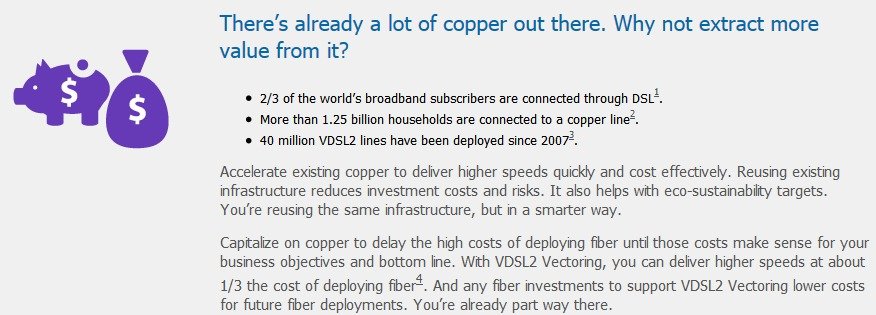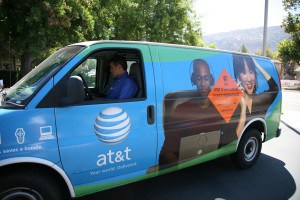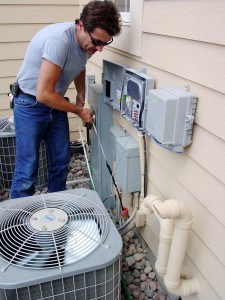Phone companies looking for a cheap way to increase broadband speeds are turning away from fiber optics and towards advanced forms of DSL that don’t bring cost objections from shareholders.
Whether your provider is AT&T or an ISP in Europe or Australia, financial pressure to improve broadband on the cheap is fueling research to wring the last kilobit out of decades-old copper phone wiring.
Alcatel-Lucent suggests VDSL2 Vectoring is one such technology that can enable download speeds up to 100Mbps using noise-cancelling technology to suppress interference.
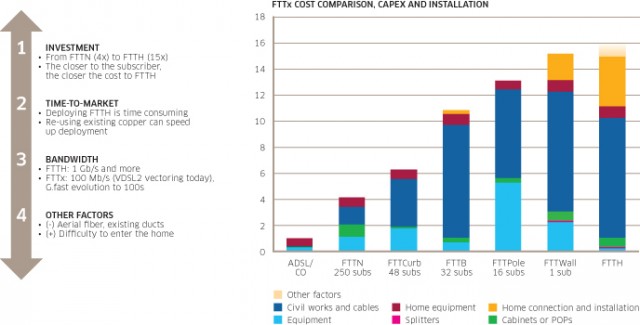
But the advice doesn’t impress fiber optic fans who suggest any reliance on deteriorating copper phone lines simply postpones an inevitable fiber upgrade that could come at a higher cost down the road.
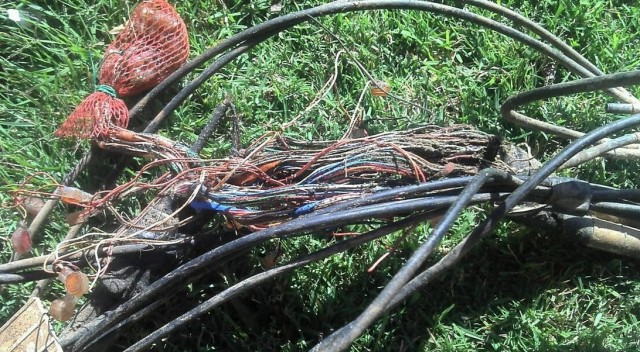
VDSL2 Vectoring and G.Fast are only as good as the copper wiring that extends to each customer. Up to 45 percent of North American wire pairs are in some state of disrepair.
Vectoring has been described as “pixie dust” by Australia’s former Communications Minister Stephen Conroy. Conroy was overseeing Australia’s switch to fiber service as part of the National Broadband Network. But a change in government has scrapped those plans in favor of a cheaper fiber to the neighborhood broadband upgrade advocated by the new Communications Minister Malcolm Turnbull that resembles AT&T’s U-verse.
“Malcolm can sprinkle pixie dust around and call it vectoring and he can do all that sort of stuff but he cannot guarantee upload speeds,” Conroy told Turnbull.
As with all forms of DSL, speed guarantees are extremely difficult to provide because the technology only performs as well as the copper wiring that connects a neighborhood fiber node to a customer’s home or office. Upload speeds are, in practical terms, significantly slower than download speeds with VDSL2. Turnbull expected download and upload speeds on Australia’s VDSL2 network to be around a ratio of 4:1, which means a customer who has a download speed of 25Mbps per second would receive an upload speed of around 6Mbps.
In the lab, VDSL2 Vectoring delivers promising results, with speeds as high as 100Mbps on the download side. DSL advocates are excited about plans to boost those speeds much higher, as much as 1,000Mbps, using G.Fast technology now under development and expected in 2015. VDSL2 Vectoring and G.Fast both require operators to minimize copper line lengths for best results. Unfortunately, dilapidated copper networks won’t work well regardless of the line length, and with many telephone companies cutting back upkeep budgets for the dwindling number of customers still using landlines, an estimated 15-45 percent of all line pairs are now in some state of disrepair.
Assuming lab-like conditions, G.Fast can deliver 500Mbps over copper lines less than 100 meters long and 200Mbps over lines between 100 and 200 meters in length.
G.Fast also allows for closer symmetrical speeds, so upload rates can come close or match download speeds.
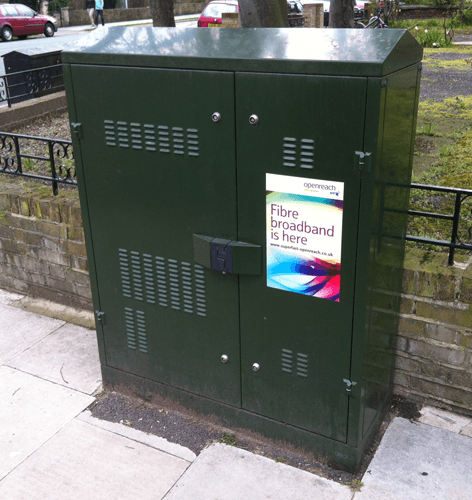
This cabinet houses the connection between a fiber optic cable and copper phone wiring.
Providers prefer the copper-fiber approach primarily for cost reasons. There are estimates deploying a G.Fast-capable VDSL service to a home would cost around 70 percent less than fiber to the home service. Workers would not need to enter customer homes either, offering less-costly self-install options.
Telekom Austria and Swisscom are among providers committed to launching the technology. Both countries are mountainous and have many rural areas to serve. Fiber rich providers are also looking at the technology for rural customers too costly or too remote to service with fiber.
Critics question the real world performance of both VDSL2 Vectoring and G.Fast on compromised copper landline networks. Decades of repairs, deteriorating insulation, corroded wires, water ingress, and RF interference can all conspire to deliver a fraction of promised speeds.
Many critics also point to the required aggressive deployment of fiber/VDSL cabinets — unsightly and occasionally loud “lawn refrigerators” that sit either in the right of way in front of homes or hang from nearby utility poles. To get the fastest possible speeds, one cabinet may be needed for every four or five homes, depending on lot size. Australia’s VDSL network, without Vectoring or G.Fast requires at least 70,000 cabinets, each powered by the electric grid and temporary backup batteries that keep services running for 1-2 hours in the event of a power failure. The batteries need to be decommissioned periodically and, in some instances, have caused explosions.
The costs of electric consumption, backup batteries, infrastructure, and maintenance of copper lines must be a part of the cost equation before dismissing fiber to the home as too expensive.


 Subscribe
Subscribe
